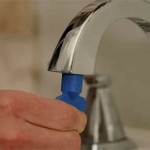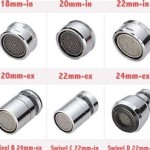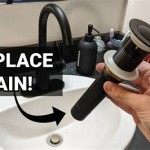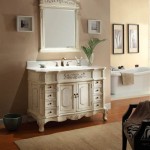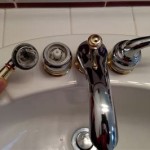How to Remove Mold From Bathroom Ceiling With Borax
Mold growth in bathrooms is a common problem, largely due to the high humidity and moisture levels prevalent in these spaces. The bathroom ceiling, in particular, is susceptible to mold accumulation as warm, moist air rises and condenses on its surface. Addressing this issue promptly and effectively is crucial to prevent health problems and structural damage. Borax, a naturally occurring mineral compound, presents a viable option for mold removal due to its antifungal and antibacterial properties. This article will outline a comprehensive guide on how to remove mold from a bathroom ceiling using borax, ensuring a safe and thorough cleaning process.
Before initiating any mold remediation process, it is paramount to understand the potential health risks associated with mold exposure. Mold spores can trigger allergic reactions, respiratory problems, and other health issues, especially in individuals with pre-existing conditions or weakened immune systems. Therefore, taking necessary precautions to protect oneself during the cleaning process is essential. This includes wearing appropriate personal protective equipment (PPE) and ensuring adequate ventilation in the affected area.
The subsequent steps will detail the preparation, application, and aftercare involved in using borax to eliminate mold from a bathroom ceiling. Following these instructions carefully will maximize the effectiveness of the treatment and minimize the risk of mold recurrence.
Preparing for Mold Removal
Prior to commencing the mold removal process, thorough preparation is indispensable. This involves gathering the necessary materials, ensuring personal safety, and preparing the bathroom environment. Neglecting these preliminary steps can compromise the effectiveness of the treatment and potentially expose individuals to harmful mold spores.
Firstly, assemble the requisite materials. You will need the following:
- Borax powder
- Warm water
- Spray bottle or bucket
- Sponge or microfiber cloth
- Scrub brush (optional, for stubborn mold)
- Personal protective equipment (PPE), including:
- Gloves (preferably rubber or nitrile)
- Eye protection (goggles or safety glasses)
- Mask (N-95 or higher)
- Ladder or step stool (if the ceiling is out of reach)
- Drop cloths or plastic sheeting (to protect the floor and fixtures)
Secondly, prioritize personal safety by donning the appropriate PPE. The gloves will protect your skin from direct contact with mold and the borax solution. Eye protection is essential to prevent mold spores and cleaning solution from entering your eyes. The mask will filter out mold spores, safeguarding your respiratory system. If the mold infestation is extensive, consider wearing a full-face respirator for enhanced protection.
Thirdly, prepare the bathroom environment to minimize the spread of mold spores. Cover the floor and any vulnerable fixtures with drop cloths or plastic sheeting. This will prevent mold spores and cleaning solution from contaminating these surfaces. Ensure adequate ventilation by opening windows and turning on the bathroom exhaust fan. If natural ventilation is insufficient, consider using a portable fan to circulate the air. Removing any clutter from the bathroom will facilitate access to the ceiling and prevent the inadvertent spread of mold spores to other items.
By meticulously completing these preparatory steps, you create a safe and efficient environment for mold removal, maximizing the likelihood of a successful outcome.
Applying the Borax Solution
Once the preparation phase is complete, the next step involves preparing and applying the borax solution to the affected areas of the bathroom ceiling. The correct concentration and application technique are essential for effectively killing the mold and preventing its regrowth. Deviation from these guidelines may result in an incomplete removal or potential damage to the ceiling surface.
To prepare the borax solution, mix one cup of borax powder with one gallon of warm water. Ensure that the borax is fully dissolved by stirring the mixture thoroughly. The solution should appear clear and free of any undissolved particles. The concentration of borax is crucial for its effectiveness as a mold killer. Using too little borax may not be sufficient to eliminate the mold, while using too much may leave a residue on the ceiling surface. It is important to adhere to the recommended ratio for optimal results.
There are two primary methods for applying the borax solution to the bathroom ceiling: using a spray bottle or a sponge. If the mold growth is localized to a small area, a spray bottle may be the most efficient option. Fill the spray bottle with the borax solution and lightly mist the affected area. Avoid oversaturating the ceiling, as this can cause the paint to peel or blister. If the mold growth is more widespread, a sponge or microfiber cloth may be a better choice. Dip the sponge or cloth into the borax solution and gently wipe the affected areas of the ceiling. Again, avoid oversaturating the surface.
Regardless of the application method, it is important to ensure that the entire affected area is thoroughly treated with the borax solution. Pay particular attention to areas with visible mold growth. If the mold is particularly stubborn, use a scrub brush to gently scrub the affected area. Avoid using excessive force, as this can damage the ceiling surface. Allow the borax solution to dwell on the surface for at least 15 minutes to allow it to penetrate and kill the mold spores. The dwelling time is crucial for the borax to effectively work its way into the mold structure and destroy it.
After the dwelling time, wipe the treated area with a clean, damp sponge or cloth to remove any residual borax solution. Ensure that the ceiling is thoroughly dry before proceeding to the next step. Drying the ceiling helps prevent moisture buildup which could contribute to the return of mold.
Post-Treatment and Prevention
After applying the borax solution and allowing it to dwell, proper post-treatment and preventative measures are crucial to ensure the complete eradication of mold and prevent future growth. This involves thoroughly drying the treated area, addressing the underlying causes of moisture, and implementing strategies to maintain a dry environment in the bathroom. Failure to address these aspects can lead to a recurrence of the mold problem, necessitating repeated cleaning efforts.
First, thoroughly dry the treated area. Use a clean, dry cloth or sponge to wipe away any remaining moisture. If the bathroom is well-ventilated, the ceiling should air dry relatively quickly. However, if the ventilation is poor, consider using a fan to expedite the drying process. Ensure that the ceiling is completely dry to the touch before proceeding further. Residual moisture can promote mold growth, undermining the effectiveness of the borax treatment.
Second, address the underlying causes of moisture in the bathroom. Mold thrives in damp environments, so it is essential to identify and rectify the sources of excess moisture. Common causes include leaky faucets, showerheads, or toilets; inadequate ventilation; and condensation caused by temperature differences. Repair any leaks promptly to prevent water from accumulating. Ensure that the bathroom exhaust fan is functioning properly and use it regularly during and after showering or bathing. Improve ventilation by opening windows or doors whenever possible. Consider using a dehumidifier to reduce humidity levels in the bathroom.
Third, implement preventative measures to maintain a dry environment in the bathroom. These measures include:
- Wiping down surfaces after showering or bathing to remove excess moisture.
- Ensuring adequate ventilation during and after showering or bathing.
- Using a squeegee to remove water from shower walls and doors.
- Washing bath mats and towels regularly to prevent mold growth.
- Inspecting the bathroom for leaks or signs of moisture damage on a regular basis.
Furthermore, consider applying a mold-resistant paint to the bathroom ceiling to provide an additional layer of protection. Mold-resistant paints contain additives that inhibit the growth of mold and mildew. These paints are particularly useful in bathrooms where humidity levels are consistently high.
By diligently following these post-treatment and preventative measures, you can significantly reduce the risk of mold recurrence and maintain a healthy and mold-free bathroom environment.
In summary, removing mold from a bathroom ceiling with borax involves a series of carefully executed steps. Thorough preparation, including gathering the necessary materials and prioritizing personal safety, is essential. Application of the borax solution requires the correct concentration and appropriate technique to ensure effective mold elimination. Finally, post-treatment and preventative measures are crucial to prevent future growth. By adhering to these guidelines, you can effectively remove mold from your bathroom ceiling and maintain a healthy and mold-free environment.

Cleaning Mold From Bathroom Ceilings Like A Pro Lovetoknow

Does Borax Kill Mold Help For You

Remove Mold On Bathroom Ceiling Learn 2 Effective Steps

How To Clean Mold In A Shower 13 Steps With Pictures Wikihow

Does Borax Kill Mold Help For You

Mold On Ceiling How To Treat Puroclean Hq

How To Remove Ceiling Mold Diy Methods

Mold On Ceiling How To Treat Puroclean Hq

How To Get Rid Of Mold From Every Surface In Your Home

How To Remove Bathroom Ceiling Mold Doityourself Com
Related Posts
